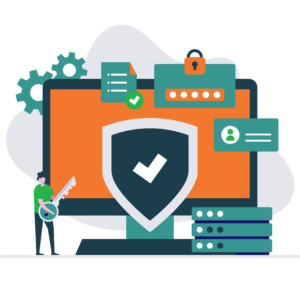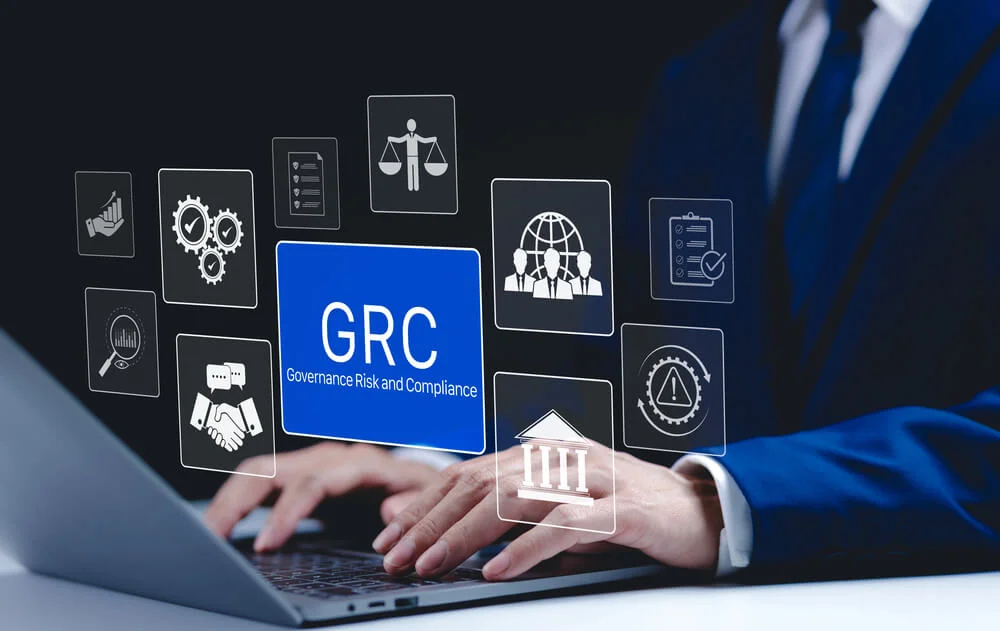5 Elements of Effective Cyber Security Risk Management
According to the Federal Reserve, cyber security issues are some of the most expensive and damaging risks to the financial market. As the financial system has become more digitized, there is greater potential for incidents to affect the market more broadly. These vulnerabilities in the financial sector go far beyond the immediate effect of a cyber incident on a particular company, with cyberattacks sending shock waves that are annually costing the world around $6 trillion. Without a cyber security risk management plan in place, cybercrime, as well as your own noncompliance, can destroy your business and disrupt the industry.
With the right strategies and systems in place, an organization can quickly adapt and thrive in the face of uncertainty or adverse conditions. The pillars of your cyber security framework give your company the stability to move forward, and these are the elements to consider.

1. Understand Cyber Security Risk Management for Cyber Resiliency
Since cyber threats will continue to evolve and escalate, companies need to spend more time and resources building cyber resiliency. A full analysis of the short and long-term damage of a cyberattack is a starting point, and ambiguous security measures need to be broken down into effective business practices. The elements of an effective management plan should uniquely address these details and the corresponding outcomes within your organization.
You achieve cyber resilience when your organization can move forward in the face or aftermath of a cyberthreat because of the investments made in preparing and responding to these risks.
2. Address All of the Factors of Cyber Security
There are five key components of cyber security:
- Confidentiality is the practice of not disclosing information to any system entities, whether processes, users or devices, unless express authorization is granted to access the data.
- Integrity means an entity is free from unauthorized modifications.
- Availability deals with any data and information being usable and accessible as needed by an authorized party or system.
- Non-repudiation is the assurance that in the exchange of information, both sender and recipient receive proof of delivery and identity to refute potential denials concerning information processing.
- Authentication is the verification of either the identity or other attributes of the entity accessing information or the ability to verify the integrity and source of the data.
Organizations keeping their cyber security risk management approach in house might do a decent job of reducing some risks, but few can develop a comprehensive strategy capable of addressing these crucial security elements. A single platform that streamlines data from a number of sources can provide dependable and comprehensive information security.
Cyber threats continue to evolve, and so does your industry. Incidents involving malware, viruses, phishing, spyware, and unsecured devices or unencrypted files are on the rise. Your organization is constantly changing and adapting to consumer trends, regulatory action, economic factors and employee behaviors, in addition to worrying about these threats. Failing to modernize your systems, perform ongoing risk management assessments or conduct system integration checks or updates opens the doors to attacks from without and within.
3. Manage and Protect Your Assets
In this element of a framework, you deploy the processes, controls and technologies needed to operate within the regulatory boundaries and expectations for your industry. This could be the onboarding process for new employees, the setup of a VPN for remote employment or the storage of customer data. In this step, you look for all high-value assets and the associated risks. Employees are an asset yet a serious risk, given their ability to compromise an entire network both knowingly and unknowingly. Your cyber security risk management plan should address both internal and external risks.
Given the size and scope of your operations, there are many opportunities to fall short of the diligence needed to stay ahead of cyber risks. Reviewing contract details for vendors or clients, updating employee policies and passwords for authorized data usage or access, conducting security threat training, confirming reporting measures and other priority tasks can be too much for one employee to handle, but sharing the duties across several individuals increases the likelihood of mistakes and errors. Using an integrated security platform that automates many of these tasks and reminders provides reliable support to your cyber management framework.
4. Detect and Protect Against Threats

Critical infrastructure and services need to have containment measures that limit the impact of a threat. These controls should be implemented according to the unique risks of your business profile and corresponding losses with vendors, consumers and the rest of the industry. Risk assessments and compliance audits need to occur regularly, and testing should be done to check how effective your detection and security monitoring controls are.
Conduct vulnerability scans, use real-time data for immediate insight into major issues, and require two-factor authentication and other password security measures from employees. Control the physical access to the network or digital equipment owned by the organization and have a plan of action for immediate steps when a breach or cyberattack occurs.
5. Prioritize Compliance Issues
When it comes to cyber security risk management, too many organizations believe that strong firewalls, password requirements and other digital security measures are enough to counter the threats of a cyberattack. Regulatory compliance is another critical element of a successful security program, and it’s particularly necessary for industries where there is significant compliance oversight. Maintaining compliance doesn’t just avoid legal consequences; it mitigates risks like data loss, security breaches, reputational damage and financial penalties.
Collecting compliance documentation, conducting audits and staying informed of regulatory changes can involve considerable expense to the company when handled manually. There is also increased room for error and oversight when handled across a team or just one individual. Compliance management software easers this burden through automation and continuous monitoring.
Partner With Cyber Security Risk Management Experts
Give your organization a strong foundation in cyber security risk management by choosing Compyl. Our platform is reliable, consistent and scalable, providing the financial service industry with an automated, all-in-one information security and compliance platform. Request a demo to get started.




